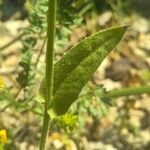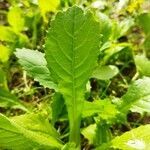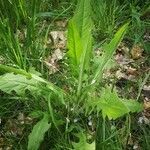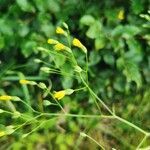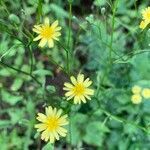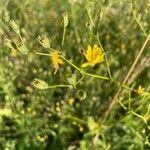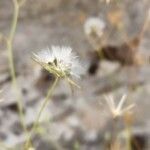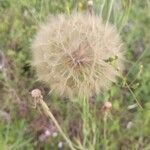Taprooted annual 2–10 dm, the stem bearing spreading glandular hairs below, glabrous above; lvs spreading-hairy like the lower part of the stem, the lowermost ones to 20 × 4 cm, mostly oblanceolate or spatulate, short-petiolate, and coarsely toothed or runcinate-pinnatifid; heads mostly numerous; invol 8–12 mm, glabrous; inner bracts ca 13, generally with raised and thickened, basally expanded midrib; outer bracts very short; receptacle glabrous; fls ca 15–30; achenes 4–6 mm, contracted above but not beaked, stramineous or pale greenish, 10–12-ribbed, the outer ones scabrous-hirtellous; 2n=8. Native of Eurasia, locally established in waste places from Va. to O. and Ind. and southward. May, June.
